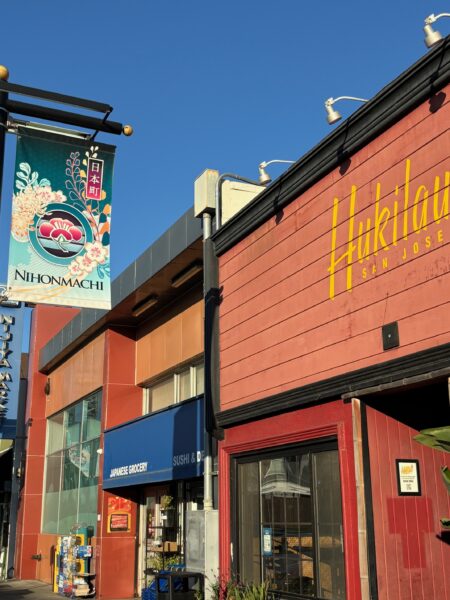 The three remaining historical Japantowns left in the United States have had a difficult time surviving the pandemic and continue to undergo challenges. San Francisco’s Japantown is undergoing a two year renovation of its core Peace Plaza, and merchants there are fearful of going under if customers stay away because of that work. Little Tokyo in Los Angeles endangered is from rising rents and large scale development and has been listed as one of the top endangered historical districts in the United States. The third historical Japantown in San Jose survives but worries about gentrification. In the face of these challenges, San Francisco Japantown is experiencing a new transformation nearby as a Koreatown is growing around it.
The three remaining historical Japantowns left in the United States have had a difficult time surviving the pandemic and continue to undergo challenges. San Francisco’s Japantown is undergoing a two year renovation of its core Peace Plaza, and merchants there are fearful of going under if customers stay away because of that work. Little Tokyo in Los Angeles endangered is from rising rents and large scale development and has been listed as one of the top endangered historical districts in the United States. The third historical Japantown in San Jose survives but worries about gentrification. In the face of these challenges, San Francisco Japantown is experiencing a new transformation nearby as a Koreatown is growing around it.
In a lot of ways, this is not surprising. The Japantown I know the best and go to fairly frequently in San Jose started as an attachment an adjunct to the Heinleinville Chinatown. San Jose Pinoytown also sprouted up in that same area, and a Filipino community center has been there for decades. Years ago, I noticed an influx of Hawaiian themed business into San Jose Japantown. One of my favorite Korean restaurants is there too.
The article make me think of other questions, like what really qualifies as a Japantown? Some say that Stonestown Galleria has become a Japantown, as it has many busineses centered around Japanese culture. Sacramento Japantown seems to be attempting a comeback, as new restaurants are moving in. I would say what qualifies as an official historical Japantown is a continued sense of community. We know the family of some of the business owners in San Jose Japantown, and sometimes we go to longstanding community events like Obon or other art festivals there.
As the article on the new SF Koreatown points out, it would be hard for the area to become an ethnic Korean neighborhood as the rents are high. The business owners see it becoming a gathering place. I see that too in San Jose Japantown, which is becoming a spot for all kinds of different Asian businesses. To me, stores like Moment Japantown typify that trend. San Francisco Japantown has been busy (in stark contrast to the San Francisco Centre mall), and San Jose Japantown restaurants definitely get business on the weekend. I think that it is a trend that works for Japantowns’ continued evolution and survival.








